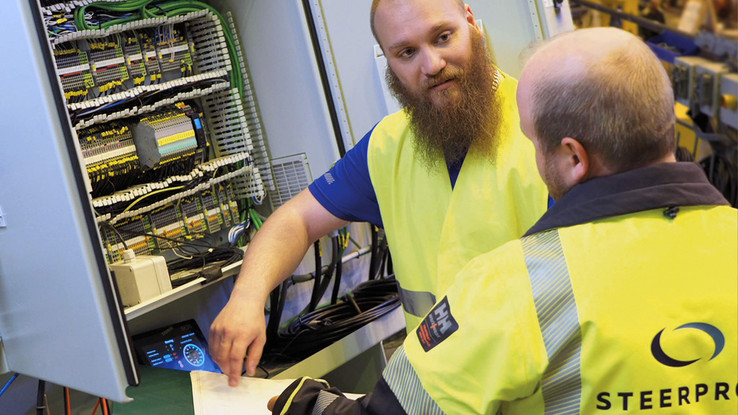Steerprop Oy's criteria for design software: versatility, reliability, integrability
"Every hour invested in the preparation of the design base saves several hours of work at later stages"
When it comes to manufacturing ship propeller steering gear for demanding conditions, the design is multidisciplinary. To meet customer needs, the design must be based on state-of-the-art methods. The design chain needs to be efficient, and information from different design disciplines needs to flow smoothly to keep the chain optimal. Through continuous product development in Rauma, Finland, Steerprop offers its customers reliable main propulsion solutions for even the most challenging conditions.
Speeding up the flow of information through migration to a single software platform
EPLAN was introduced to Steerprop when it began to explore software solutions that would make it easy to maintain up-to-date information between different aspects of the design. Esa Peltomaa, Chief Design Engineer at Steerprop Oy, says the move to EPLAN has brought scalability to the design process that is required in different situations.

© Picture: Steerprop Oy

© Picture: Steerprop Oy
"Every hour invested in the preparation of the design base saves several hours of work at later stages"
One of Steerprop's strong customer segments is the supply of ice-strengthened equipment for the demanding conditions of the Arctic seas. Other segments include offshore vessels and passenger and cruise ships. Through careful design, propulsion systems combine the best mechanical and hydrodynamic efficiency, not forgetting reliability.
"Every hour of work invested in the preparation of the design base saves several hours of work at later stages," says Peltomaa, summarising the thinking behind the basics of electrical and automation design at Steerprop. "Circuit diagrams and pages that have already been designed are stored on the server, so that all designers have access to them in the same format. "The design team praises the automatically generated reports and especially the EPLAN component library Data Portal, which is easy and fast to use. The continued expansion of the Data Portal is also something that is appreciated and it is hoped that development will continue in the same direction.
Steerprop wants to systematically continue to develop its design activities to maintain optimal quality and production. For an export company such as Steerprop, the language functions of the design software are actively used. The overall translation process is accelerated when the right terms are readily available in the software database. Good training, support and the ability to create interfaces are features that Peltomaa highlights as strengths of the software they use. EPLAN supports a project structure in line with IEC standards, and this also supports Steerprop's approach. The standard-based approach standardises the design, providing consistency and quality.
Increasing integration as a trend in electrical and automation design
In summary, Peltomaa says that reliable design software supports their daily work in many ways. Looking at the bigger picture, Steerprop sees potential in the direction of integrations such as EPR/PDM systems. "We have a strong vision of the functions our designers need for an efficient workflow. We've already introduced features, off-the-shelf and tailored, that enable the best possible end result." When asked about the future, Peltomaa says they will continue to focus on high-quality groundwork in electrical and automation design. This will bring the most tangible benefits both now and in the future. The high utilisation of EPLAN supports Steerprop's goals of efficiency and quality. Automation and the benefits of interfaces, for example in subcontract manufacturing and data flow, are issues that Peltomaa believes Steerprop will look at in the future.


